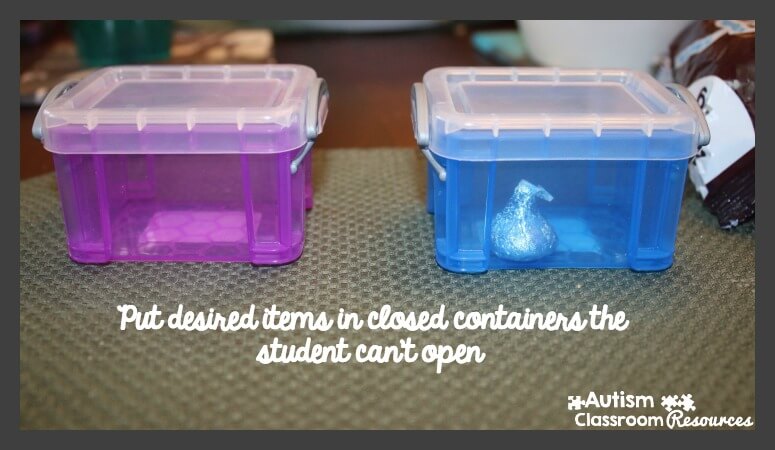Sharing is caring!
I posted about incidental teaching in one of my last post in the Effective Interventions in ABA series where I went into detail on different examples of incidental learning. You can check out this post and video if you missed it or need a refresher on this type of learning. Today I thought I would give you some suggestions of how you can create opportunities for learning and then follow the student’s lead to teach new skills to autistic children. Outside of asking the child, one of the points of this form of teaching is to set up the environment with enticing activities but creating learning opportunities within them. You can always ask questions as you read, play, etc. but sometimes it takes more creativity to create opportunities for individuals to initiate communication skills. So I am focusing on examples of incidental learning in the educational environment here.
The trick to creating these examples of incidental learning is to hit a balance between pushing the student out of her comfort zone to create a little tension in new situations and reach but not so much that it causes either frustration or the student gets discouraged and shuts down or gives up.
[Tweet “The trick to incidental teaching is balancing challenge with frustration of the learner.”]
This is not a definitive list so I would love to hear from you special education teachers about how you set up incidental opportunities for the learning process
Examples of Incidental Learning: To elicit requests for desired items or activities
Put desired items:
- Up on shelves where students can’t reach them – this teaches life skills
- In closed containers that students can’t open
- Tape containers (like food bags or containers) closed
Stop an ongoing activity as an incidental teaching method:
- Stop a swing from swinging and hold until the student requests
- Pause a CD or music player mid song
- Stop a child bouncing on an exercise ball if you are holding on to him
To elicit requests for help or needed materials
- Leave items out of the materials for completing a task, like a pencil to do a worksheet
- Leave out a piece of a puzzle (if the student needs things completed)
- Leave out a piece of file folder game
- Tape the scissors shut for a cutting task
- Provide a pencil with a broken tip
- Provide a pen or marker that is out of ink
- Take a piece out of a game or toy
- Hide a piece of a game you are playing behind your back
Labeling Items / Actions
- Hold back items in a series until the student names them. For instance naming animals together and stopping to see if the student will name the next one. This can be done for any types of items using pictures or objects.
- If the student chooses a book, read a page and have them name the pictures.
- If the student has figurines she likes, have her name items (could be the name of the item or just an element like a shoe) as she puts them away or puts them in a container
- Label actions in a game of charades in which the adult acts out an action and the child names it
- Follow the child to what he wants to play with and narrate what he is doing and block his access to the activity so they only get partial information until he models your language
 Commenting / Completing
Commenting / Completing
- Sing a song and leave out a word
- Read a familiar story that the child wants and stop before a familiar refrain or leave out a word (e.g., Brown bear, brown bear, what do you ____?) and see if the child fills it in
- Leave out choices of books with repetitive phrases like the Eric Carle books and stop before you get to that phrase to see if a student fills it in. This is another great way to encourage commenting/completing.
- Another good example of incidental learning is to load your song board at morning meeting with familiar songs and stop singing for familiar choruses. Something like Itsy Bitsy Spider for younger students and All About That Bass for older kids.
Adjectives
- When a child really wants specific items, have a variety on hand of different colors or sizes. Then have them request the items by specifying the color (e.g., I want yellow Starburst)
- Put a desired item in colored containers, different shaped containers or different size containers and require the student to request them by the characteristic for better access
You can also fold academics into social skills based on the student’s choice of activities. For everyday activities, if there is more than one piece of materials, have him/her count them. Putting words on common items like building blocks and have them read it to get the next block for their structure goes a long way when incorporating incidental teaching.
25 Ways to Create Learning Opportunities Handout
And for those of you who are looking for something to share with others, I’ve put these examples of incidental learning in a pdf you can download above to use. Enjoy! And next up in the series, I will give you some ideas for different daily activities to create incidental learning opportunities.







